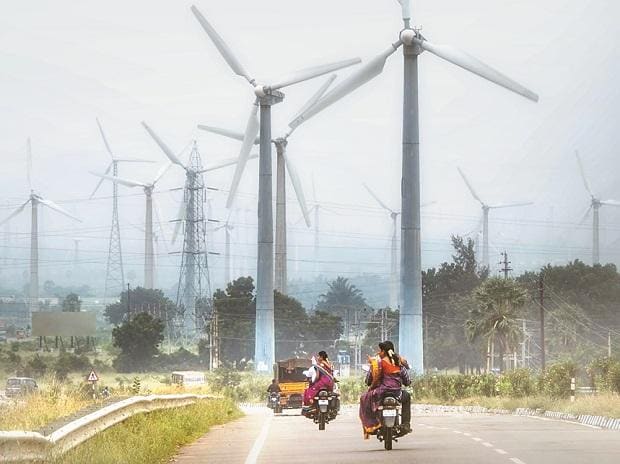The answer to India’s renewable energy targets lies in the wind, literally. And India knew it way back in the 1980s, when it had started investing in wind power development. And this form of renewable energy enjoyed an edge over solar over the years.
For instance, in 2014, wind power’s installed capacity was about 21 GW, while solar’s installed capacity was just 2.6 megawatts. Wind power currently contributes 10.2% of total installed capacity and makes up for 37% of renewable energy mix.
Tulsi Tanti’s contribution
Businessman Tulsi Tanti, who passed away recently, contributed in a big way to India’s wind energy space. His company, Suzlon Energy, currently has over 100-plus wind farms and an installed capacity over 13 GW in the country. India’s total installed wind capacity stands at 41.2 GW. Suzlon developed some of Asia’s largest onshore operational wind farms in states like Gujarat, Rajasthan and Tamil Nadu.
To give a leg-up to the industry, the government also gave financial incentives such as Accelerated Depreciation benefits. A portion of the project cost was repaid by the Centre. It also gave generation-based incentive, where wind power producers would get an incentive of 50 paise on each unit of power generated.
Then there were also subsidies and customs duty exemptions on certain wind electric generators. While other incentives include waiver of inter-state transmission charges for wind projects commissioned before 2025 to facilitate inter-state sale of wind power.
Why Wind is good for India?
India has an ambitious goal to meet 50% of its electrification requirements through non-fossil fuels by 2030 with installed renewable capacity of 450 GW. Wind constitutes 31% or 140 GW of this target, and hence a crucial link for India’s sustainable goals.
Problems faced by wind energy sector
But, over the years, wind energy could not keep its momentum. Solar power installed capacity has increased by a massive 2,063% since 2014, while wind installed capacity has risen just 93% during the same period.
One of the reasons was the introduction of a competitive-based reverse bidding auction, where bidders keep the bids lower to win projects. Under the earlier Feed-in-Tariff mechanism, power price would be in accordance with the project cost. The tariffs fell from Rs 4-5 per unit to Rs 2.5-3 per unit after moving to auction, according to a parliamentary panel report. In fiscal 2021, solar tariffs ranged between Rs 2-2.2 per unit.
Competitive bidding at low tariffs led to concentration of projects in only two states of Gujarat and Tamil Nadu, where wind speeds are higher. This has put pressure on land availability and power evacuation infrastructure in these states, leading to delays in project commissions. For instance, there have been delays in commissioning of Bhuj II, Jam Khambhaliya and Tirunelveli extension projects in 2021.
Vinay Rustagi, Managing Director, Bridge To India Energy says tariffs went down drastically after wind moved to competitive bidding. Costs have also gone up since 2019-20. Majority of wind suppliers facing deep financial challenges/
Payment delays by discoms
Payment delays from power distribution companies also led to troubles for wind power companies. According to a CRISIL report, debt worth Rs 30,000 crore for wind power projects faced stress due to payment risks from discoms as of January 2021.
Sunil Jain, Chairman, Indian Renewable Energy Alliance says government should do away with reverse-bidding auctions. Indian can add another 50,000 MW by 2030 if we fix the tariff system
The road ahead
The government has recently announced to scrap reverse-bidding auctions for wind projects, which came as a breather to the industry. In 2021, the Solar Energy Corporation of India (SECI) awarded 2.4 GW of standalone wind tenders, which were oversubscribed in contrast with the past 2 years, when the subscribed volumes for standalone wind tenders were 50-80%.
According to a wind energy outlook report by GWEC, India is expected to install 19.4 GW of wind capacity in the next four years. If this figure is realised, the country can add around $10 billion in direct and indirect gross value added (GVA) to the economy, the report said.
If nurtured with proper planning of transmission, harnessing offshore-wind and hybrid projects, wind energy can provide the right balance for India’s energy needs and accelerate the country’s shift towards net zero emission.





GIPHY App Key not set. Please check settings